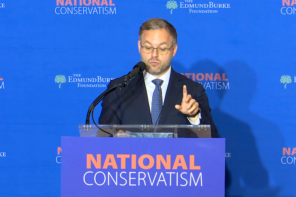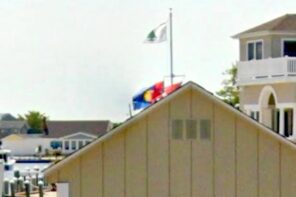David Eagle reports in The Christian Century what many small-church pastors have known for a while: megachurches are where parishioners go when they want a great (big) youth program for the kids and not a lot of involvement for themselves.
Unlike congregations like my own—where there might be a gap of a few years in the Sunday School—megachurches can attract a critical mass of children, and pay for quality programming. And of course many hands makes a light load, which means you won’t get tapped for endless committees and fundraisers.
Eagle argues—correctly, I think—that megachurches reflect a weakening of the organized part of religion. That is, people who attend large congregations don’t go very often, and they delegate a lot of the activities in which they’d be expected to participate in a small church.
But then he closes with this:
Ironically, while the rise of mega-churches may signal the loosening hold of organized religion, it may create a larger role for some churches in public life. Consider that in 2008, Saddleback Church in Southern California hosted a presidential forum between candidates Barack Obama and John McCain. Because of its size, a 20,000-member church like Saddle¬back can host a presidential debate; it carries a lot more cultural influence than, say, a coalition of 100 congregations of 200 members each.
And since, as pointed out earlier, larger churches contain a higher proportion of people with high incomes, they are even more likely to attract the attention of politicians. In this fashion, mega-churches can both reflect the loosening of religious ties and prompt the rise of some churches’ social and political influence.
Small churches might be able to exercise more influence over their members’ behavior, but the numbers favor the bigger outfits. It’s important to notice as well how American social self-sorting affects the political situation. Congregations of any size tend to be more or less politically homogeneous, whether liberal or conservative. Meanwhile, megachurches also tend to be located in suburban neighborhoods, often the most competitive electoral districts these days. So if you want to reach the liberals in Edina, for example, or the conservatives in Sugar Land, the local megachurch is a great, efficient place to visit.
You might think all of this would provide some incentive for megachurches to maximize their political involvement, and guess what? To some extent, you’d be right! In a paper published this spring, two grad student researchers at Notre Dame present findings that show that politically active congregations actually grow more quickly over time than less engaged ones. In a blog post they write:
Powdersville First Baptist Church in Easley, South Carolina, exemplifies this process. In what its pastor describes as a “Lazarus story,” it went from being nearly insolvent to a thriving church with active missionary activities around the world. This has been attributed to the efforts of Pastor Brad Atkins, who assumed the role of senior pastor at the church in 2006. Under his leadership, average attendance at Sunday worship services grew from around thirty to an average of 350 people in 2015. Atkins instituted a number of new programs and services to help resurrect the dying church, including a voter registration program with the goal of registering every eligible voter in his congregation. Atkins claims to even “lick the envelope and stick on the stamp for them.“
Before you get bent out of shape about blurring lines separating church and state and how churches don’t deserve their tax exemption and they’re all just in it to establish a theocracy, though, consider this:
As Christianity became more closely associated with conservatism and the Republican Party in the American public’s mind, many liberals and Democrats abandoned what they saw as a religion that no longer represented their political values. Indeed, nearly 40 percent of those who no longer attend church blame a difference of belief with the religion or religious leaders. In other words, churches’ political activities hurt religion by driving away dissenting adherents.
While this seems to explain why the US has become less religious overall, it is not clear that involvement in politics actually drives politically active churches’ own members away. Politics may hurt religion as a whole, but it does not necessarily hurt the political churches themselves.
Sounds about right to me. One of the first things you hear when you talk about church with an American “None” is that they don’t think you have to go to church to find God. The other is that they believe churches are too political these days, and they worry about having to agree completely on matters both religious and political.
Keep all of this in mind as the 2016 campaign progresses. So far, candidates have mostly hit medium-sized congregations. Primaries are retail politics, and pols want to give a personal touch whenever they can. Once things move into the general election, though, the temptation to visit megachurches will increase. When the candidates do, ask yourself: where is this church located? What will this visit do for the candidate’s donations? What kind of political activity does this church participate in? Will the candidate’s rhetoric turn people off from organized religion, or draw them in? I suspect questions like these will provide a lot of grist for the religion and politics mill this season.




